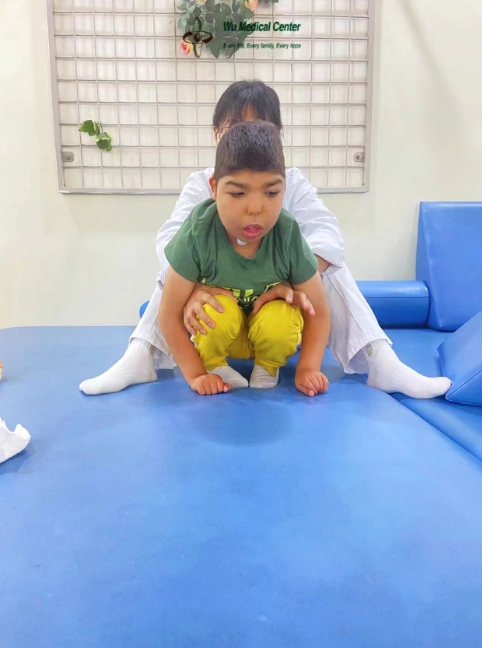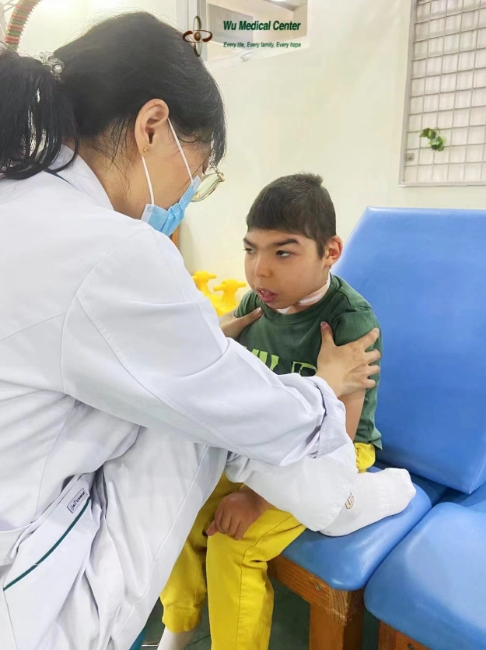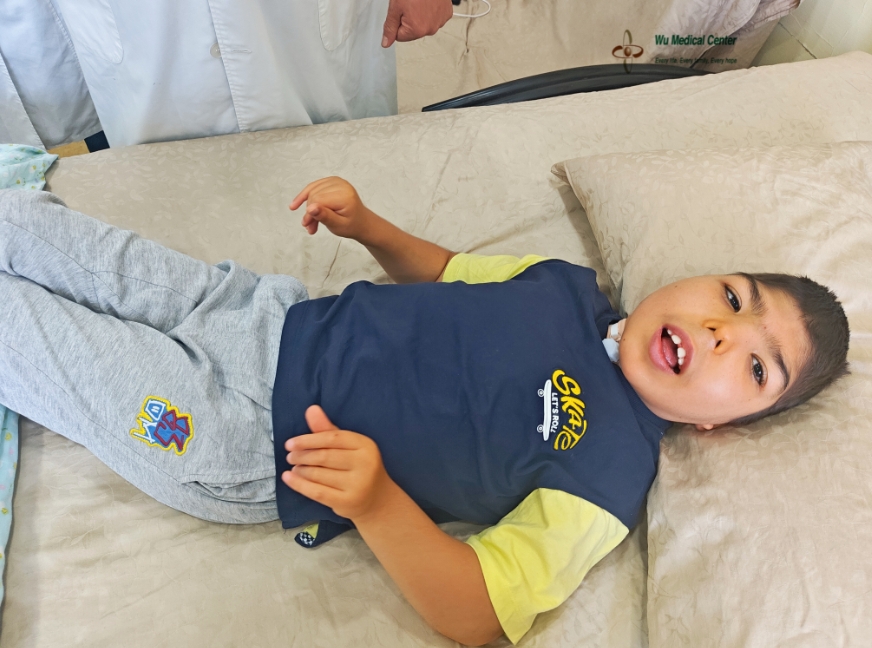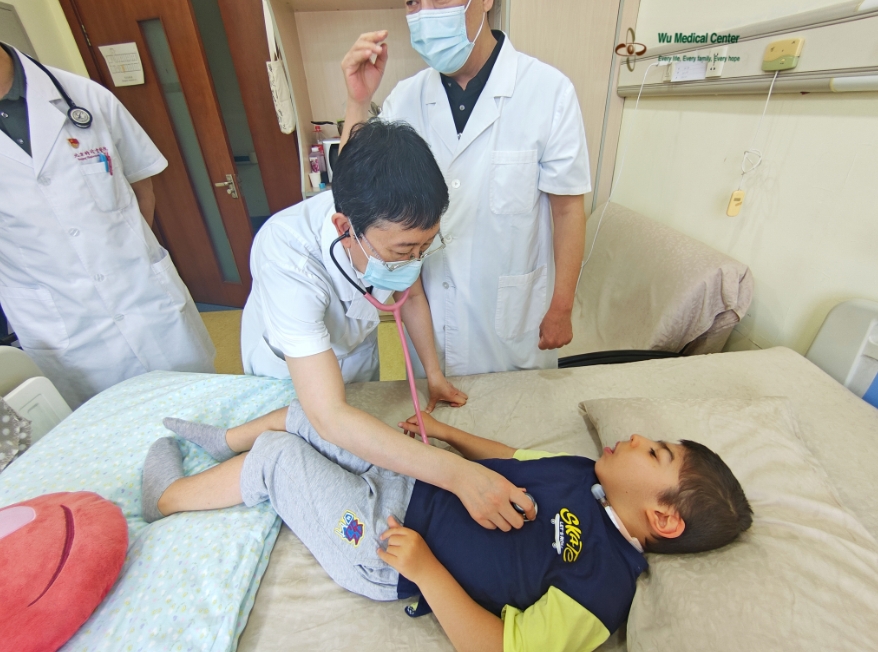Leonard Andrei Dragu-1. Cerebral palsy, 2. Di-George syndrome-(Romanian)
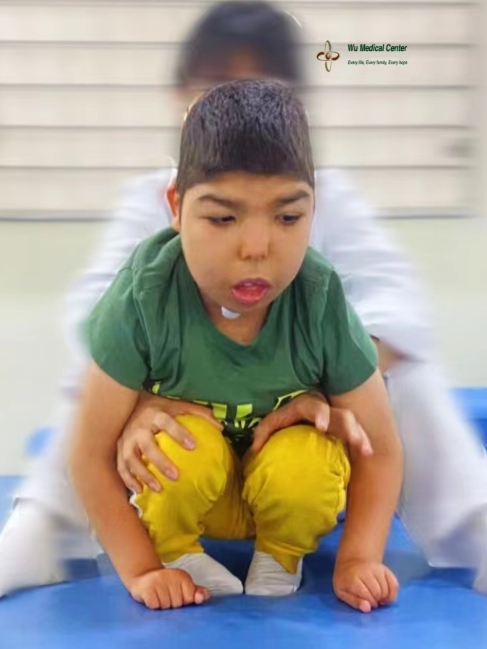 Patient's name: Leonard Andrei Dragu
Patient's name: Leonard Andrei Dragu
Gender: Male
Age: 11 years old
Nationality: Romanian
Diagnosis: 1. Cerebral palsy, 2. Di-George syndrome
At admission:
The patient was admitted with a history of intellectual and motor dysfunction for over 11 years. He was diagnosed with Di-George syndrome and admitted for treatment. He underwent congenital heart surgery at the age of one month, had a gastric feeding tube and tracheostomy at the age of 7 months, was diagnosed with infantile spasms at the age of 8 months, and has been on treatment with levetiracetam and clobazam for seizures since the age of 6 years old.
Inpatient Examination:
Patient's blood pressure was 148/100 mmHg, his respiratory rate was 30 breaths per minute, his heart rate was 110 beats per minute. He was 109 cm tall and weighed 27 kg. His both buttocks showed a circular, 2 cm-sized pressure sore with visible muscle depth. There was a shallow yellow foreign body in the anus resembling a date seed, and the surrounding skin was slightly red. There was a gastric feeding tube on his abdomen. There was also a tracheal stoma on his neck. His thorax was symmetrical, and both lungs had clear respiratory sounds. His heart rate was slightly rapid and the rhythm was irregular. His abdomen was soft without any masses, and there were no significant abnormalities in the liver and spleen.
Neurological Examination:
Patient was clear headed, but had significant developmental delay. He had no response to his name, but had response to hand clapping. His speech function was impaired, and he could only produce a "ah" sound. He was fed through a gastric feeding tube and had excessive drooling. His pupils were round and reactive to light with a diameter of 4 mm, but there was delayed light reflex and no significant nystagmus. He could not track objects by his eyes, and his visual field test could not be cooperated with. He had a weak reaction to sound, could not follow instructions, had poor head control, his head tended to droop when sitting, could not maintain a sitting position independently, could not turn over, could not stand or walk alone. He had active limb movement, his hands could not be grasped, his muscle strength examination of his limbs was not cooperative, his limb muscle tone was slightly high, there was exaggerated response to tendon reflexes in his limbs, his sucking reflex was negative, and there was no response to palmomental reflex. On his both sides, the Babinski sign was positive.
Treatment process:
The patient was admitted with a clear diagnosis of Di-George syndrome. He was given neural stem cells + mesenchymal stem cells + CAST therapy, which increased the number of nerve cells in the brain and spinal cord, repaired nerve damage, improved blood circulation in the brain and spinal cord, regulated the immune system, nourished nerves, and other treatments. Additionally, he received rehabilitation therapy.
After treatment:
The patient's condition has improved significantly. He has become more responsive to external stimuli, and he can raise his head and smile when called his name. His eyes can follow light, and his light reflex is more sensitive than before. His grip strength in his hands has significantly increased, his motor flexibility has improved, and the abnormal elevated muscle tone in his limbs has decreased compared to before. He can maintain a sitting and squatting position with assistance. The pressure sores on his buttocks have also improved compared to when he was admitted.
